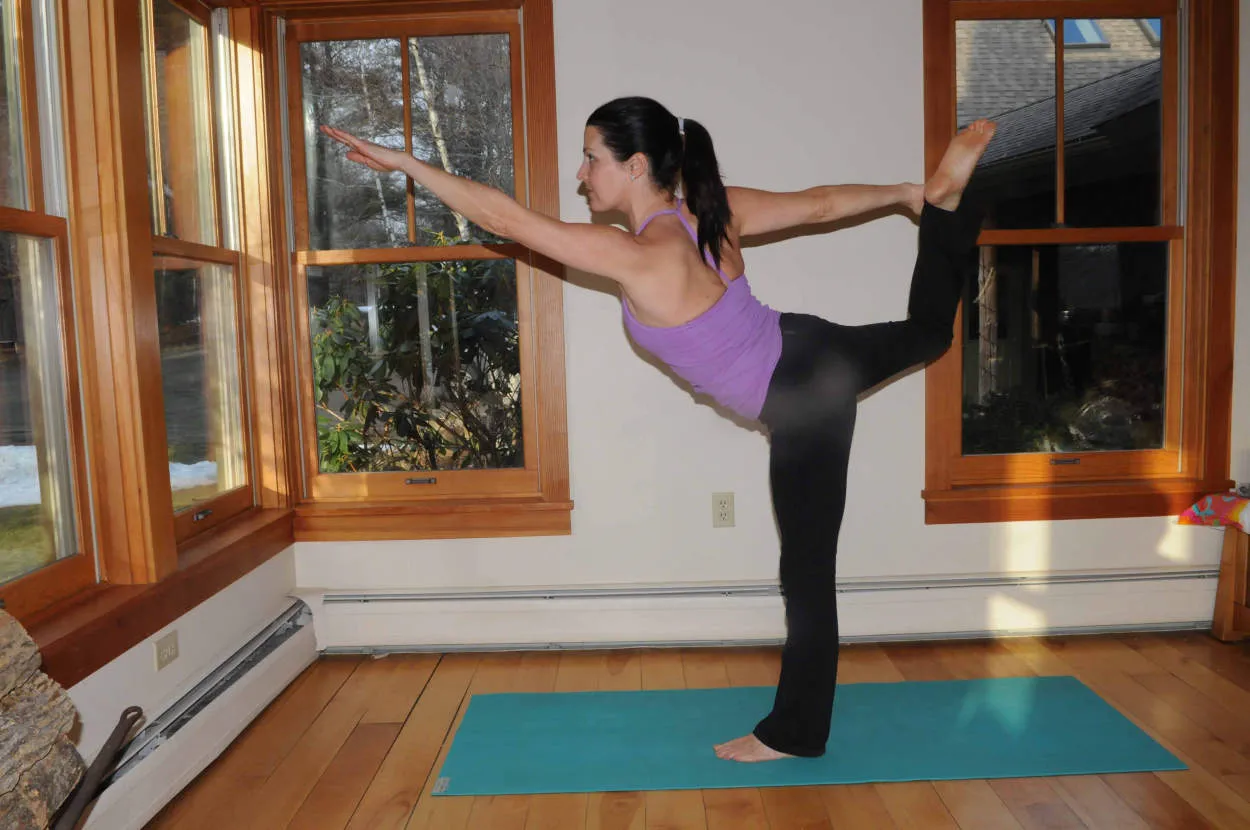Yoga for Athletes: Enhancing Performance and Flexibility
Integrating Yoga into Sports Training
Yoga for Athletes: Enhancing Performance and Flexibility
In recent years, athletes have increasingly turned to yoga as a complement to their sports training routines. Yoga offers a wide range of benefits that can help athletes improve their performance and increase their flexibility. By integrating yoga into their training, athletes can achieve improved balance, strength, and mental focus.
Benefits of Yoga for Athletes
1. Flexibility: Yoga movements and poses promote elongation of muscles, increasing overall flexibility. This can help athletes prevent injuries and improve their range of motion, leading to better performance in their respective sports.
2. Strength: Yoga requires athletes to use their body weight as resistance, helping them develop functional strength and stability. The practice of holding yoga poses can increase muscle endurance and enhance core strength, which are essential for optimal athletic performance.
3. Balance and Coordination: Yoga poses challenge athletes to maintain balance and control over their bodies. This improves their proprioception and coordination, which are crucial for sports that require agility and quick reactions.
Integrating Yoga into Sports Training
1. Pre-Workout Warm-Up: Athletes can incorporate yoga as a warm-up routine before their sports training sessions. This prepares the body by loosening tight muscles, increasing blood flow, and mentally focusing for the upcoming intense physical activity.
2. Cross-Training: Yoga serves as an excellent cross-training activity for athletes. It provides a low-impact workout that helps in active recovery, reducing the risk of overuse injuries and aiding in the restoration of muscles.
3. Post-Workout Stretching: After intense training sessions, athletes can engage in yoga poses to stretch and relax their muscles, promoting faster recovery and reducing muscle soreness.
Conclusion
Integrating yoga into sports training offers numerous benefits for athletes. Whether it is enhancing flexibility, building strength, or improving mental focus, yoga can play a vital role in optimizing an athlete’s performance. By incorporating yoga into their training routines, athletes can achieve balance, increase their physical and mental capacity, and ultimately excel in their respective sports.
Benefits of Yoga for Flexibility and Strength
Yoga has long been recognized for its numerous benefits, particularly in enhancing flexibility and strength. These benefits extend not only to those who practice yoga regularly but also to athletes looking to improve their performance in their respective sports.
1. Improved Flexibility
One of the primary advantages of incorporating yoga into your fitness routine is the significant improvement in flexibility it offers. Yoga poses focus on elongating and stretching the muscles, tendons, and ligaments, leading to increased range of motion. This increased flexibility helps athletes perform better by allowing them to move with greater ease and agility in their activities.
2. Enhanced Strength
Contrary to popular belief, yoga is not just about flexibility; it also contributes to the development of strength. The various yoga asanas, such as plank, crow pose, and warrior poses, engage different muscle groups and promote muscular endurance. These poses require holding positions for an extended period, thus building strength in the targeted areas. Strong muscles provide a solid foundation for overall athletic performance.
3. Injury Prevention
Yoga’s emphasis on correct alignment, balance, and body awareness can greatly reduce the risk of sports-related injuries. By practicing yoga, athletes can improve their proprioception, which is the body’s ability to sense its position in space. This increased body awareness enables athletes to move more efficiently and perform movements with proper form, reducing the likelihood of strains, sprains, and other injuries.
4. Mental Focus and Stability
Besides physical benefits, yoga also cultivates mental focus and stability. The practice incorporates controlled breathing techniques and meditation, which help athletes develop concentration, clarity, and heightened mindfulness. These mental skills can prove invaluable in intense athletic situations, allowing athletes to stay focused, make better decisions, and maintain composure under pressure.
5. Improved Recovery and Relaxation
Yoga offers athletes an excellent tool for recovery and relaxation. The gentle stretches, deep breathing, and meditative aspects of yoga promote relaxation, reduce muscle soreness, and aid in the recovery process. Regular yoga practice can contribute to better sleep quality, faster muscle repair, and enhanced overall well-being, ensuring athletes are physically and mentally ready for their next training session or competition.
Yoga Techniques for Injury Prevention
Incorporating yoga into your fitness routine can be highly beneficial for athletes looking to enhance their performance and flexibility. Not only does yoga focus on strength and balance, but it also helps prevent injuries that commonly occur during intense training sessions. Here are some key yoga techniques that athletes can utilize to lower the risk of injuries:
- Warm-up: Start each yoga session with a gentle warm-up to prepare your body for the exercises ahead. This could include dynamic movements, such as sun salutations, to activate your muscles and increase blood flow.
- Stretching: Incorporate both dynamic and static stretches to improve flexibility and reduce the likelihood of muscle strains or tears. Hold each stretch for 15 to 30 seconds and focus on key areas like the hamstrings, quadriceps, and hips.
- Breathing: Deep breathing techniques, such as pranayama, help calm the mind and enhance focus while also providing optimal oxygenation to the muscles. This can aid in preventing muscle fatigue and reducing the risk of overexertion injuries.
- Balance and Stability: Yoga poses that challenge balance and stability, such as tree pose or warrior III, can help athletes develop body control and improve proprioception. This increased awareness of body positioning can prevent falls and twisted joints.
- Core Strength: A strong core is crucial for maintaining proper posture and preventing injuries, especially in the back and shoulders. Incorporate yoga poses like plank, boat, and side plank to strengthen core muscles.
By integrating these yoga techniques into their training routine, athletes can enhance their performance, improve flexibility, and reduce the risk of injuries. Remember to practice yoga consistently and listen to your body’s limits to maximize the benefits.
Mental Benefits of Yoga for Athletes
Yoga for athletes is not only beneficial for physical performance and flexibility but also has several mental benefits. Incorporating yoga into their training routine can contribute to improved focus, concentration, and mental resilience for athletes of all levels.
1. Stress Reduction and Relaxation
Yoga involves deep breathing exercises and mindfulness, which help athletes release stress and tension. Through yoga, athletes can tap into a state of relaxation, allowing them to let go of negative thoughts and worries that may hinder their performance. Regular practice of yoga can help athletes find calmness and balance amidst the intensity of their training and competition.
2. Improved Mental Clarity and Focus
Yoga practices that involve concentration and meditation can enhance mental clarity and focus. Athletes who practice yoga regularly develop the ability to tune out distractions and stay present in the moment. This mental sharpness can be especially beneficial during competition, enabling athletes to make quick decisions and react effectively to changing situations.
3. Enhanced Self-Awareness
Yoga encourages athletes to connect with their bodies and become more self-aware. By paying attention to their breath, sensations, and alignment during yoga poses, athletes can develop a greater understanding of their physical capabilities and limitations. This heightened self-awareness can help athletes prevent injuries by recognizing early warning signs and adjusting their training accordingly.
4. Stress Management and Emotional Regulation
Yoga provides athletes with tools to manage stress and regulate their emotions. Regular practice can help athletes develop coping mechanisms to deal with the pressure and emotional ups and downs that come with competition. Yoga techniques such as breath control and relaxation exercises can be utilized in high-stress situations to center and calm the mind.
In conclusion, incorporating yoga into an athlete’s training regimen goes beyond physical benefits. It offers numerous mental advantages such as stress reduction, improved focus, enhanced self-awareness, and stress management. By embracing yoga, athletes can achieve a greater balance between their physical and mental well-being, leading to overall improved performance.
Tailoring Yoga Practices for Different Sports
Yoga for Athletes: Enhancing Performance and Flexibility
Yoga has increasingly become a popular practice among athletes, offering numerous benefits such as improved flexibility, strength, balance, and mental focus. However, it is important to understand that not all yoga poses and sequences are suitable for every sport. In order to maximize the benefits, athletes should tailor their yoga practices to their specific needs and requirements.
1. Yoga for Runners
For runners, incorporating yoga into their training routine can help prevent injuries and improve overall performance. Focus on poses that target the leg muscles such as standing forward bend, low lunge, and pigeon pose. Additionally, practicing breathing techniques like deep belly breathing can enhance lung capacity and endurance.
2. Yoga for Cyclists
Cyclists often experience tightness in the hips, lower back, and shoulders. Yoga poses that focus on hip opening, such as butterfly pose and pigeon pose, can help alleviate tension in these areas. Adding upper body strengthening poses like plank and downward-facing dog can also be beneficial for cyclists.
3. Yoga for Swimmers
Swimmers can benefit from yoga by improving their breath control, core strength, and shoulder flexibility. Poses that target the shoulders and chest, such as cow face pose and eagle pose, can help swimmers prevent shoulder injuries and improve their stroke technique. Core-strengthening poses like boat pose and plank are also recommended for swimmers.
4. Yoga for Team Sports
For athletes participating in team sports, focus on poses that improve balance, coordination, and agility. Poses like tree pose and warrior poses can help enhance stability and concentration. Incorporating partner yoga poses can also foster teamwork and communication among athletes.
Before incorporating yoga into their training regimen, athletes should consult with a certified yoga instructor who can guide them through appropriate techniques and modifications. By tailoring their yoga practices to their specific sport, athletes can enhance their performance, prevent injuries, and find balance between their physical and mental well-being.
Conclusion
Yoga is an excellent practice for athletes looking to enhance their performance and flexibility. Its combination of strength, balance, and flexibility exercises helps prevent injuries and improves overall athleti… (50 words)




